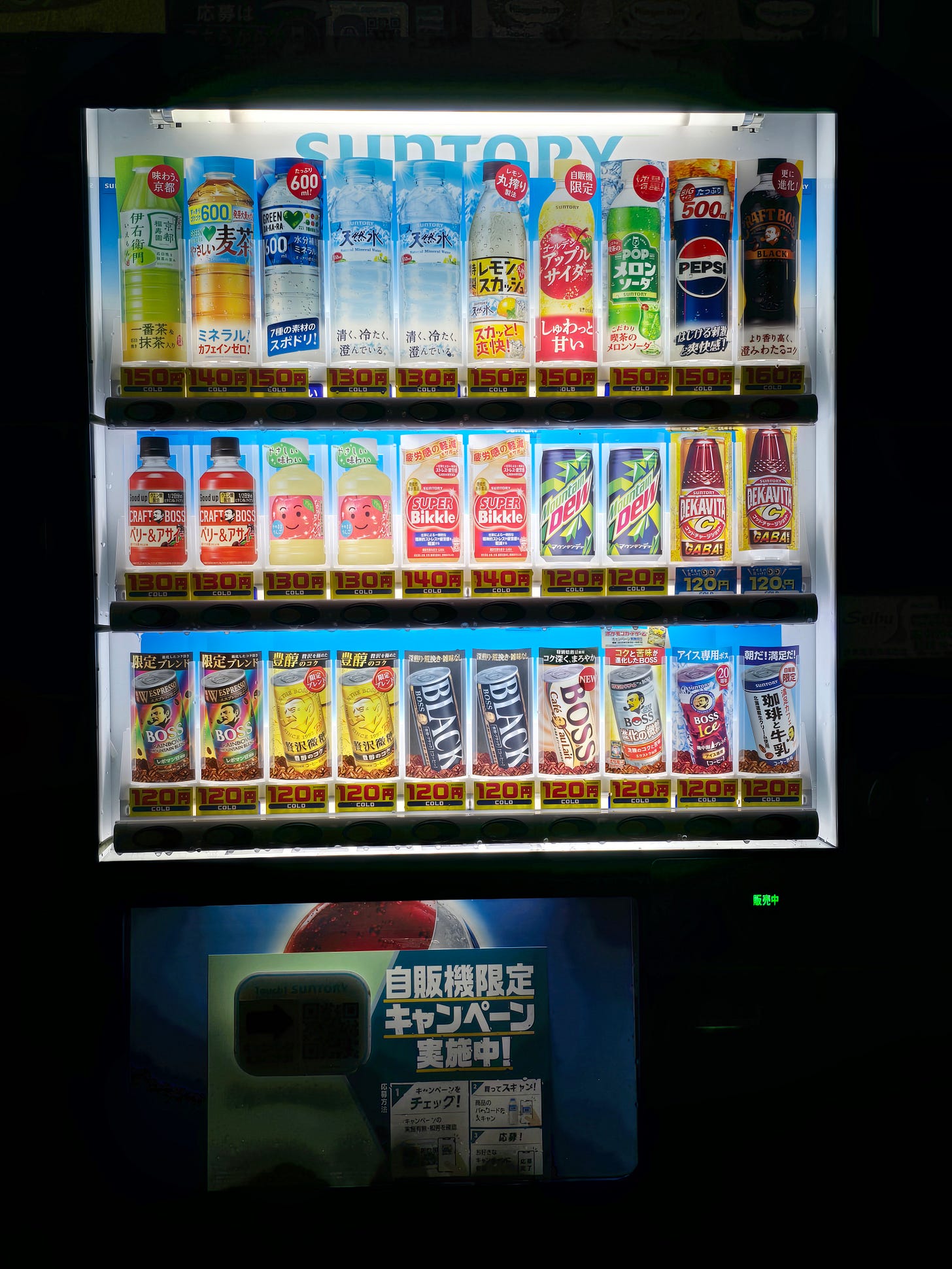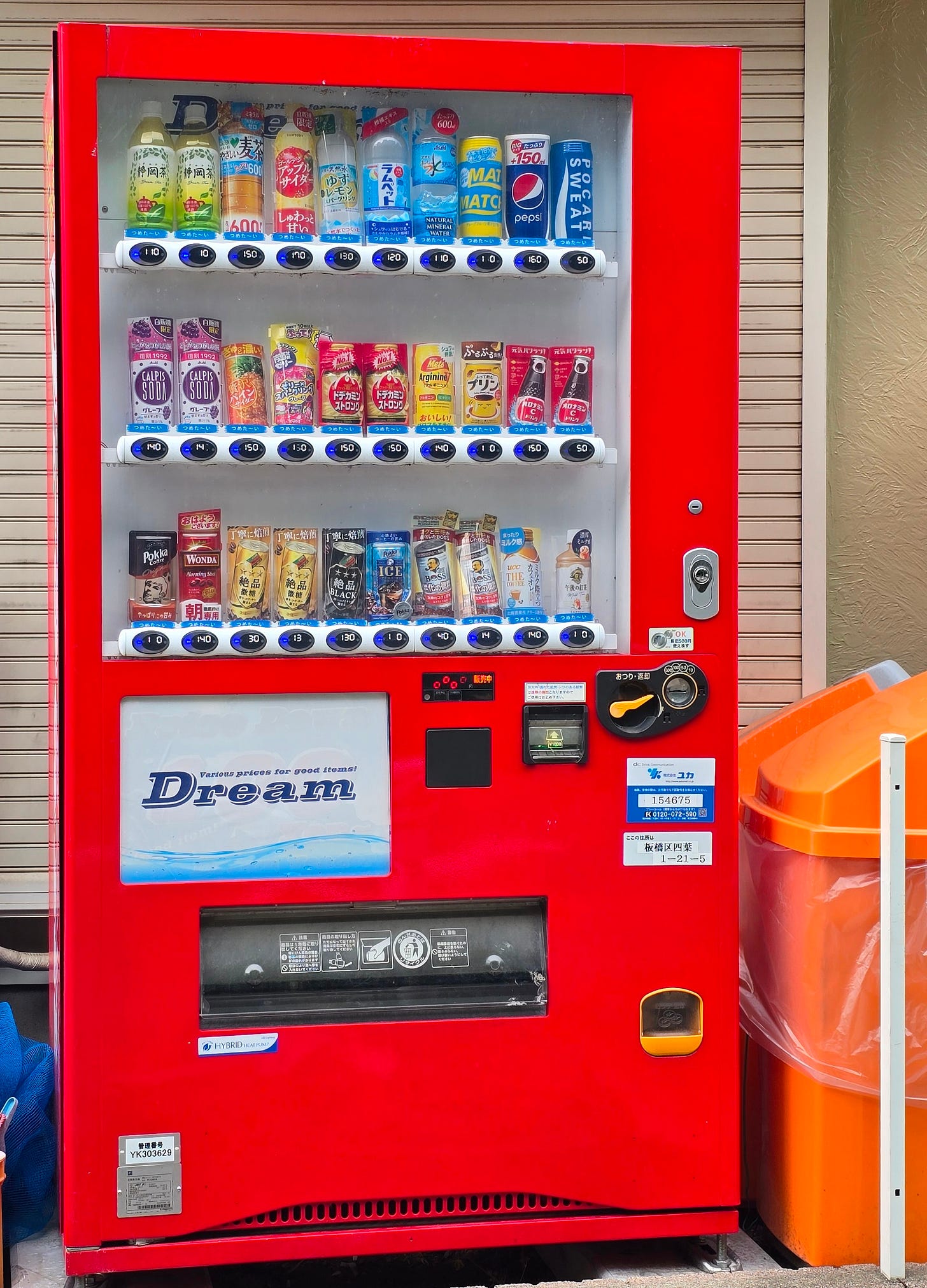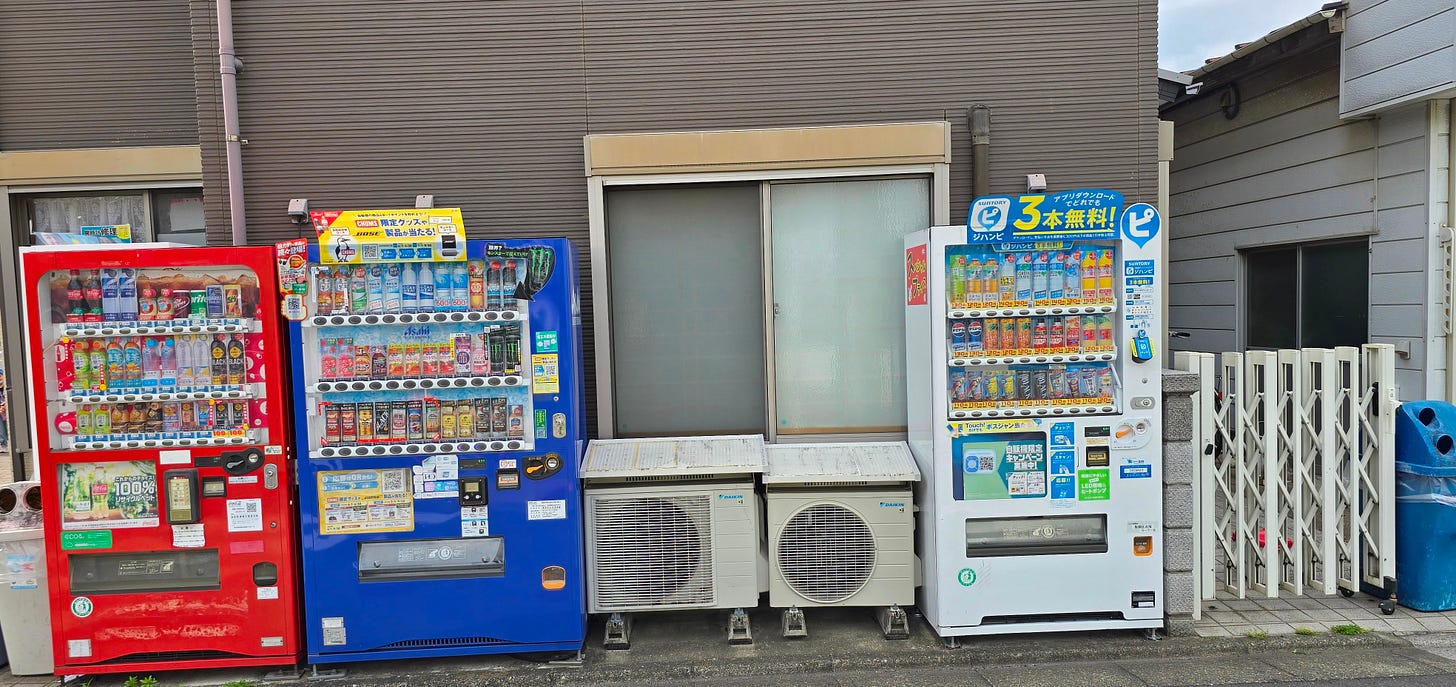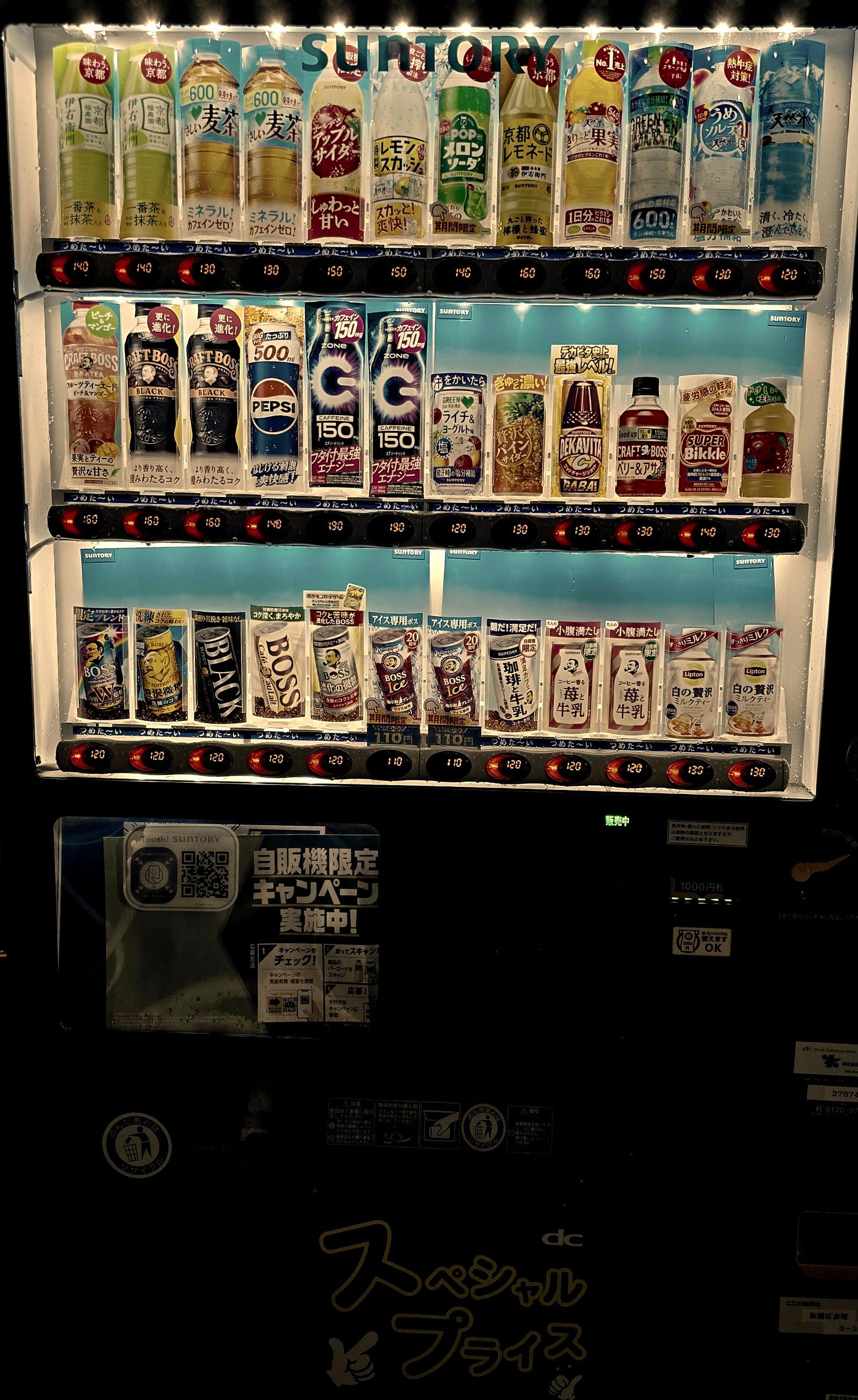You’d expect that, when I think back on my arrival in Kyoto in the mid-1990s, my mind would revisit the temples and shrines, castles, and gardens that the city is deservedly famous for.
And I do think of them. But I’m just as likely to think about the vending machines, or 自販機 (jihan ki), I encountered there.
Of course, I’d seen many such machines before in other countries. But this was different. They were everywhere. And I soon found out that was the case in every city and town I’d visit in Japan.
I lived in a modest suburb of Kyoto, some distance from the main tourist sites. The charm of the neighbourhood was in its local shops, obvious sense of community and the winding alleyways that connected many of the houses or apartment blocks with the bigger streets.
Arriving back from a business trip late in the evening, early in my time in the city, I stumbled from the bus and immersed myself in the warren of small streets just big enough for the slim "軽自動車" (kei jidōsha) yellow-plated cars to pass through.
This being Kyoto, there was no menace in the situation, just the disorientation of being in still-unfamiliar territory. It was a dark night. No moon, no stars and no road signs to guide me. But as I turned the first corner in the echoing passageway, I saw a gentle light pouring out over the pavement ahead of me.
It came from a large white metal box with the word “Suntory” written in western script on the side. The vending machine, a gentle and silent sentinel of the street, was illuminating the way, helping me home.
At other times during my stay in the city, hurrying to the train station for an early appointment, I’d rely on one of these machines to get me fully awake for the rigours of the day ahead.
It was a simple process: fumble for the silvery 100 yen coin plus maybe 2 or 3 bronze 10 yen coins, select the hot drink (winter) or the cold one (summer), and then the slight pause and faint whirring sound followed by the reassuring thump in the machine near my feet. My scalding (or freezing) can of coffee was ready.
In Wim Wenders’ lyrical film Perfect Days, the main protagonist, Hirayama, has several fixed routines in his working day, which unfolds rather like a William Carlos Williams poem.
He cleans toilets. He drives in a small van from one site to another. He sits alone in the park at lunchtime, taking photos of the sunlight coming through the leaves on the trees (komorebi) with an old, pre-digital camera. He reads stories by William Faulkner and essays by Aya Kōda.
And every morning, as he sets off to work, he buys a drink from the vending machine just outside his small apartment block.

*
Japan, with a third of the population of the US, has a comparable number of vending machines and probably the most machines per capita of any country. I’ve seen an estimate of one machine per 23 inhabitants of the country.
But what’s really striking about the machines in Japan is their ubiquity. In other countries, including my own, I’m used to seeing them in airports or hospitals and many other buildings.
In Japan, they seem to be on every corner. Next to parking lots, at the corner of narrow alleyways in residential neighbourhoods, and outside the local dry cleaning shop or ramen restaurant. You generally don’t have to walk far in any city to find one.
A key part of the cityscapes of Japan, they even inspire artists.
Most of them sell soft drinks of some sort and are low-tech. Some still only accept coins (the price hasn’t gone up much since the 90s), though increasingly they will take the prepaid IC cards (Pasmo or Suica) that are used to pay for railway journeys (and many other things) in Japan.
Apparently, there are a few AI-powered machines that can predict popular drinks based on the weather.
But it’s the robust, modest nature of their technology and their unchanging design that make them seem built to endure.
*
But what explains their ubiquity?
Some have said it’s because of the low rate of crime in the country – the machines are unlikely to be vandalised even when placed in an isolated spot (I have never seen one damaged in that way).
Others point to the importance and attraction of convenience culture (Japan is also home to countless convenience stores) in a country where many people work or study long hours, at work or at home, and might need refreshment at any hour.
Some observers suggest it’s down to a love of innovation and, in particular, an affinity for robots (if we can call vending machines that).
And maybe Japan’s supreme practicality and preparation also come into the picture. In a country that is prone to massive earthquakes, vending machines are now seen as part of the relief effort.
Some are programmed to dispense beverages for free in the case of a catastrophic loss of power. I’ve seen a suggestion that they could become an emergency WiFi centre in case of a massive earthquake.
Some machines have been fitted with solar panels, while others even pull CO₂ out of the atmosphere.
And some machines are now equipped with automated external defibrillators or flood detectors.
It’s comforting to think a vending machine might help save my life in case the expected major earthquake strikes in my lifetime. Or if my heart gives out on the walk home from buying a “melon pan” at the local convenience store.
Their integration into the infrastructure of the country and their unchanging presence while generations of humans have come and gone suggest they may outlive us all.
*
When the expected catastrophic quake or some other disaster occurs, I like to think of them forever holding their ground and perpetually ready to dispense refreshment even if we are gone.
Maybe it will be these simple metallic boxes stocked with cans of Boss strong black coffee or Calpis’s unique offering of fizzy fermented milk and sugar that will witness our passing, rather than the mercurial demons of artificial general intelligence.
Alicia E Stallings’ poem The Machines Mourn the Passing of People casts a light of gentle melancholy on machines as they stoically endure the absence of people. I imagine the vending machines silently mouthing each verse far into the planet’s future.
The poem ends with these possibly prophetic lines:
Left to our own devices forever,
We watch the sun rust at the end of its days.
I wonder whether it’s not, perhaps, the worst future imaginable.









How can a piece of writing about machines be so lyrical? Loved it🙏❤️
Such a fun read. And I started salivating early in, remembering my favorite vending machine treat in Japan—gen mai cha! So toasty roasty good.